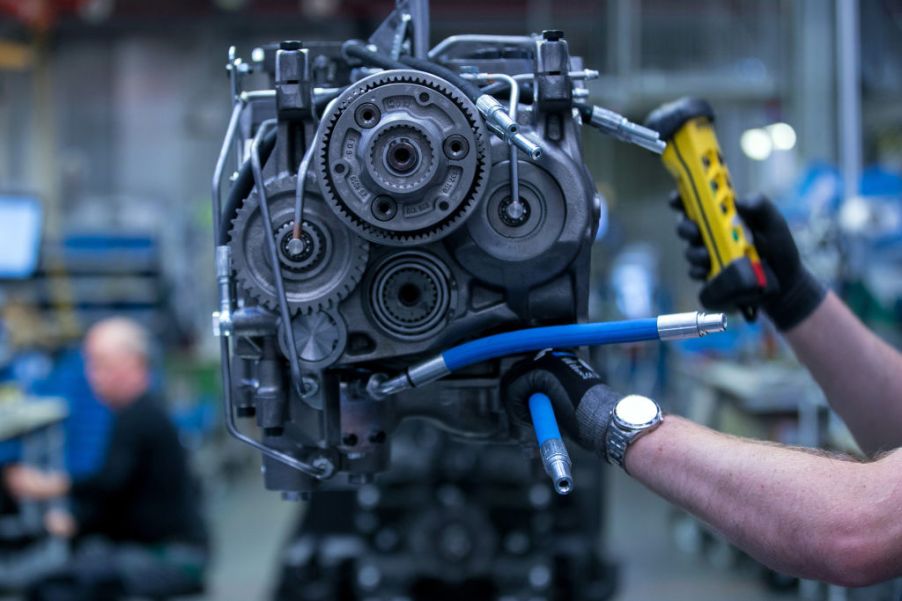
An Inside Look at How an Automatic Transmission Works
At times, we take our vehicles for granted – forgetting all the work that goes on under the hood to enable automatic transmission, the most common transmission on the road today, to work.
While the ease of the automatic transmission revolutionized the motoring world, the science behind it is not always understood or appreciated. The technology that allows automatic transmission vehicles to shift between gears is impressive and includes a complex cast of components.
Automatic transmission basics
Automatic transmissions use gears to make the most effective use of an engine’s torque, allowing the engine to operate at an appropriate speed while providing a wide range of output speeds for the car. At its simplest, automatic transmissions function as follows:
- The engine connects to the transmission at the bell housing
- The bell housing contains a torque-converter, which replaces the clutch used in a manual transmission vehicle
- The torque-converter connects your engine to the transmission and puts pressure on transmission fluid to communicate speed
- Planetary gearsets in the transmission create different gear ratios, allowing the vehicle to shift between different gears based on the communication from the torque converter.
Understanding the planetary gearset
The planetary gearset is the central player in the automatic transmission. The automatic transmission is composed of two planetary gearsets joined together to create one component. The planetary gearset is composed of:
- The sun gear in the center
- The planet gears that rotate around the sun gear
- The planet gears’ carrier that connects the planet gears
- The ring gear on the outside that meshes with the planet gears.
The compound planetary gearset used in an automatic transmission is composed of one ring gear but two sun gears and two sets of planets. These pieces work in conjunction to allow the car to operate in first gear, second gear, third gear, overdrive, and reverse.
The torque converter is able to send the necessary information to the planetary gearset to ensure the appropriate gears are engaged to create the necessary ratios.
The role of the torque converter
While the planetary gearset is the core component in creating the necessary gear ratios, the torque converter takes the place of the clutch in a manual transmission, controlling communication with the planetary gearset.
The main components of the torque converter are:
- Impeller: Part of the torque converter housing (which is connected to the engine) and drives the turbine via viscous forces
- Turbine: Connected to the transmission input shaft
- Stator: Sits between the impeller and turbine and minimizes churning losses, increasing torque by redirecting fluids.
The engine turns the impeller which puts force on transmission fluid. This force rotates the turbine, which sends torque to the transmission. Without the stator, there would be churning losses and heat buildup.
These churn losses would be a result of the velocity of the fluid returning from the turbine’s opposition to the rotation of the impeller. The stator ensures the majority of the fluid velocity is in the direction of the impeller, helping the impeller move rather than inhibiting its movement. The stator can only rotate in the same direction as the impeller and are generally only engaged when a vehicle is stalled or accelerating.
Some torque converters also contain a lock-up clutch. This device locks the turbine so that it is mechanically connected to the impeller. This guarantees that the engine’s torque is transmitted to the transmission input shaft.
Importance of valves and modulators in automatic transmissions
In order to know when to shift, automatic transmissions need to receive signals about how hard the engine is working. Valves and modulators serve this purpose.
Vehicles will use either a vacuum modulator or cable linkage to put pressure on a throttle valve. The throttle valve will then communicate with shift valves via fluid pressure. This pressure will tell the shift valves when to shift from one gear to another.
The shift valves will respond to different pressure ranges; depending on the speed of the vehicle, the appropriate shift valve will engage to shift the car into the appropriate gear range.
The behind-the-scenes work an automatic transmission performs is impressive. Next time your car shifts a gear without any work from you, you can appreciate the intricate work being performed under the hood.


